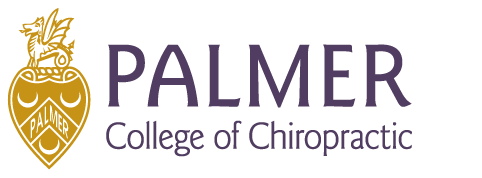Module 1 Outline
- The low back pain burden
- Pain is created in the brain
- QUIZ
Module 2 Outline
- What your patients tell you matters
- Pain education
- QUIZ
Module 3 Outline
- Acute versus chronic pain
- Neuroplastic changes occuring with chronic pain
- Structural and functional changes occruing with chronic pain
- Chronic pain and the inner body schema
- QUIZ
Module 4 Outline
- Old structural pathology model vs new neuroplasticity model of pain
- Old structural pathology model vs new neuroplasticity model of spinal dysfunctionand chiropractic care
- Reiterating- what you tell your patients matters to outcomes
- QUIZ
Module 5 Outline
- How to simplify scientific information to communicate to patients
- Pain processing and adjustments
- Inculdes examples to communicate with patients
- QUIZ
Module 6 Outline
- Basci science and clinical science differences
- Three pillars of evidenced based practice
- Chiropractic is a regulated profession- this includes communication with patients
- QUIZ
Module 7 Outline
- Take home messages and communication strategies about chiropractic clinical research and:
- Low back pain
- Neck pain
- Headaches
- QUIZ
Module 8 Outline
- Neurophysiology of chronic pain
- Whiteboard animation about pain
- Pain feelings are created in the brain
- QUIZ
Module 9 Outline
- Incongruent sensory information, pain, and other symptoms
- Chiropractic subluxation role
- Spinal dysfunction and brain function
- QUIZ
Module 10 Outline
- Negative neuroplastic effects of recurring low-grade neck dysfunction
- Communicating the neurophysiology of chronic pain
- Neuroplasticity
- Brain adaptations
- QUIZ
Module 11 Oultine
- Emotional limbic parts of the brain and pain amplification
- Stress and pain
- Stress and chiropractic subluxations
- QUIZ
Module 12 Outline
- Orchestra anaology
- Prefrontal cortex and pain in the brain
- Patient education
- QUIZ
Module 13 Outline
- Pain and the amygdala
- Limic system and chronicity of pain
- Amygdala and emotions
- Prefrontal cortex in chronic pain patients
- QUIZ
Module 14 Oultine
- The stress neuromatrix
- Stress and the brain
- The brain and traumatic experiences
- QUIZ
Module 15 Oultine
- Communicating stress and how chiropractic can help
- The link between mental health and chronic pain
- Relationship between sleep, inflammation, and pain
- Chronic pain and HRV
- QUIZ
Module 16 Outline
- Stress varies throughout life
- Adverse childhood experiences
- Maternal stress and babies
- QUIZ
Module 17 Outline
- Physical trauma and deep paraspinal musculature
- Physical trauma and acute pain effects on the brain
- Stress and propripception
- Proprioception and neuroplastic changes
- QUIZ
Module 18 Outline
- Symptoms
- Research on pain and other symptoms
- Patient education and analogy regarding pain
- QUIZ
Module 19 Oultine
- Motor control
- Sensory information can impact motor control
- Low back pain or injury and motor control
- Inner body schema and accurate motor control
- QUIZ
Module 20 Oultine
- How chiropractic adjustments can improve spinal motor control
- Gut microbiome and the brain
- What else influences pain?
- QUIZ
Module 21 Outline
- Neuroplastic effects of chiropractic adjustments
- Adjustments and pain modulation
- Research and the benefits of chiropractic care for neck pain, back pain, cervicogenic headaches, and migraines
- Image summary of neuroplastic effects of chiropractic adjustments
- QUIZ
Module 22 Oultine
- Communication to patients about neck pain
- Chronic stress and opoid addiction
- Pain education importance
- QUIZ
Module 23 Oultine
- Tech neck
- Stress, prefrontal cortex, and addictions
- Chiropractic patients and opiods
- QUIZ
Module 24 Oultine
- Key points patients needs to know about pain
- Chronic pain education
- The importance of neuroscience in communication about chronic pain
- QUIZ
Module 25 Oultine
- Reassessing goals when working with chronic pain patients
- Implications of current neuroscience about chiropractic and chronic pain
- QUIZ
Module 26 Outline
- Discussing the differences between internal and external communication
- Resources for chiropractors
- Basic science and clinic science differences in relation to communicating about chiropractic
- QUIZ
Module 27 Outline
- The science of chiropractic and communication
- Awareness campaign about chiropractic
- Neurophysiology patient education
- QUIZ
Speaker(s)/Author(s)
|
Heidi Haavik, B.Sc., Ph.D. |
Release Date:
Jan 1, 2023
Course Expiration Date:
Mar 29, 2024
CE Hours
5.00

